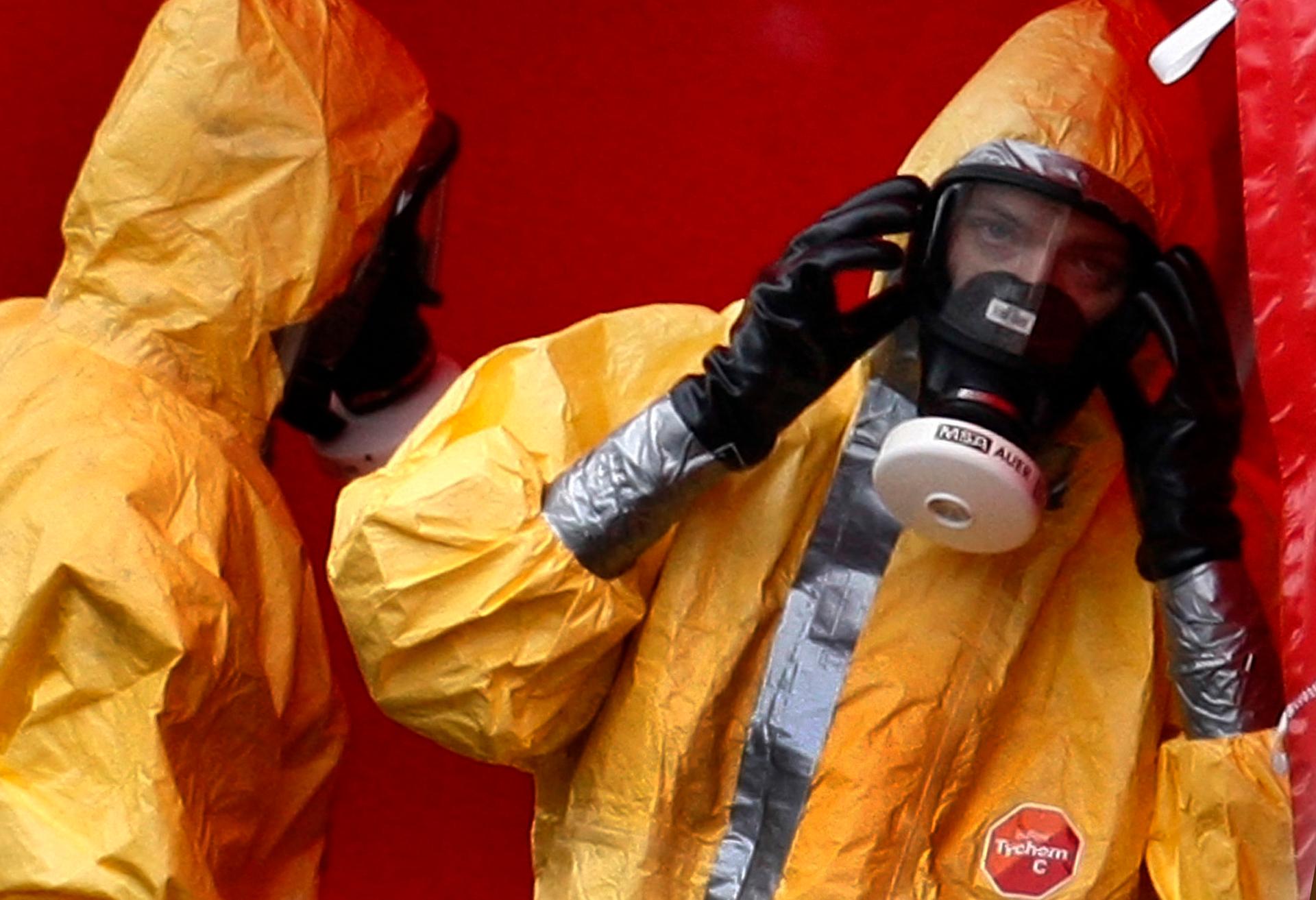Are we ready for the next epidemic?
Workers in biohazard suits stand at the entry of a sealed-off poultry farm in Trumling, in southern Germany on Sept. 8, 2007. The H5N1 bird flu virus had been found in several ducks at a nearby poultry farm.
Epidemics of new infectious diseases seem to be occurring regularly. First there was SARS in 2003, then swine flu in 2009 and Ebola in 2014. Now, there’s Zika.
“The lesson of the last 10 years is that there’s always something else,” says Dr. Stephen Redd, director of the Centers for Disease Control and Prevention’s Office of Health Preparedness and Response. “We can’t predict what the next infectious disease epidemic will be or when and where it will occur.”
Redd’s job comes with a heavy responsibility. It’s up to him to lead the CDC’s, and the world’s, preparations for the next epidemic. But not knowing what the next epidemic will be or when it will strike makes planning hard.
“There’s a large group of things that are not predictable, I’d put diseases like Ebola and Zika into that category,” Redd says. “What we need to do is have the capacity to surge quickly and be adaptable and to learn what we can, as quickly as possible.”
One key preparation is CDC’s Emergency Operations Center, or EOC. It takes up an entire building on the CDC campus, in suburban Atlanta, next door to Emory University.
The Emergency Operations Center looks like NASA’s Mission Control. Jumbo displays show the current status of the Zika response, updates on ongoing polio eradication efforts, global weather conditions and TV news.
During a health emergency, such as the current Zika epidemic, key scientific, logistics, operations, and communications staff members sit at each workstation, helping to coordinate the agency’s response. The personnel come from other CDC programs like the Birth Defects Division, the entomology unit and the Epidemiology Intelligence Service, CDC’s crack group of medical detectives.
Along the back of the room, teams of scientists huddle in glass-walled conference rooms reviewing the latest epidemiological data on Zika. Communications specialists stand ready 24/7 to receive updates from the outside.
The EOC is only used, or in CDC lingo, "activated," when there is a health emergency, but since 2009, it’s been in use almost 91 percent of the time. During one particularly hectic period in spring 2016, there were four activations all at once — for Ebola, Zika, polio and the Flint, Michigan, water crisis.
.jpg&w=1920&q=75)
Emergency operations, however, are just one part of public health preparedness, says CDC’s Redd. “We are working with countries overseas to establish laboratory and surveillance systems for detection. Countries will have the capacity to prevent outbreaks that can be prevented, detect outbreaks and respond to them effectively.”
That capacity to detect and respond is critical to stopping the spread of disease. In parts of Africa and Asia, millions of people live in crowded urban conditions where an infectious disease like Ebola can spread rapidly. Cities like Kinshasa, Lagos and Phnom Penh have been especially vulnerable.
Lessons from Ebola
In 2014, 10 months passed before doctors realized that the mysterious illness spreading in West Africa was Ebola. By then, it had spread from a small, rural area in Guinea to Liberia and Sierra Leone, poor countries that lacked the capacity to identify cases of Ebola early in the outbreak.
That’s one reason other countries joined the US in 2014 to create the Global Health Security Agenda. The coalition now includes 55 countries, but the US is by far the leader, committing a billion dollars in assistance to 17 at-risk countries to address emerging epidemic threats.
But, according to Redd, creating the Global Health Security Agenda also served US interests. “The work overseas benefits the US. If the country and global community can contain an outbreak outside the US, that has a benefit,” he said.
Domestic Preparedness
The CDC provides $575 million to state and local health departments to help them respond to public health emergencies. The local health departments have enlarged their laboratory and epidemiology staffs, created emergency operations centers and established disease detection systems.
But even with increased capacities, in a health emergency, CDC and state health departments often find themselves pressed to find enough staff to support their response efforts. During the 2014 Ebola outbreak, more than 1,600 CDC employees were drawn from other CDC programs to help with Ebola duties.
This practice of “robbing Peter to pay Paul” worries Dr. Richard Danila, deputy state epidemiologist at the Minnesota Department of Health. “When you’re pulled away for an emergency, the routine work falls behind. We’re always worried we’re going to miss something.”
To stop this from happening, public health specialists, like Dr. Michael Osterholm, director of the University of Minnesota’s Center for Infectious Disease Research and Policy, are calling for a permanent cadre of professionals to fight epidemics.
“If we had a major conflict today in Southern Europe, we wouldn't expect the Navy’s Sixth Fleet, which is there now with an aircraft carrier, three destroyers and a number of other ships, to suddenly develop overnight. That’s what we do all the time in public health.”
Over the next five years, the CDC is investing more than $2 billion dollars to prepare itself, developing countries and state and local health departments, to be able to respond to health emergencies.
And while health preparedness is still a work in progress, CDC’s Redd thinks that this investment is making a difference. “I think we’re more prepared than we were five years ago or 10 years ago, and five years from now, we will be more prepared than we are today.”
America Abroad is an award-winning documentary radio program that takes an in-depth look at one critical issue in international affairs and US foreign policy every month. You can follow us on Facebook, talk to us on Twitter, and subscribe to our weekly newsletter for updates.
